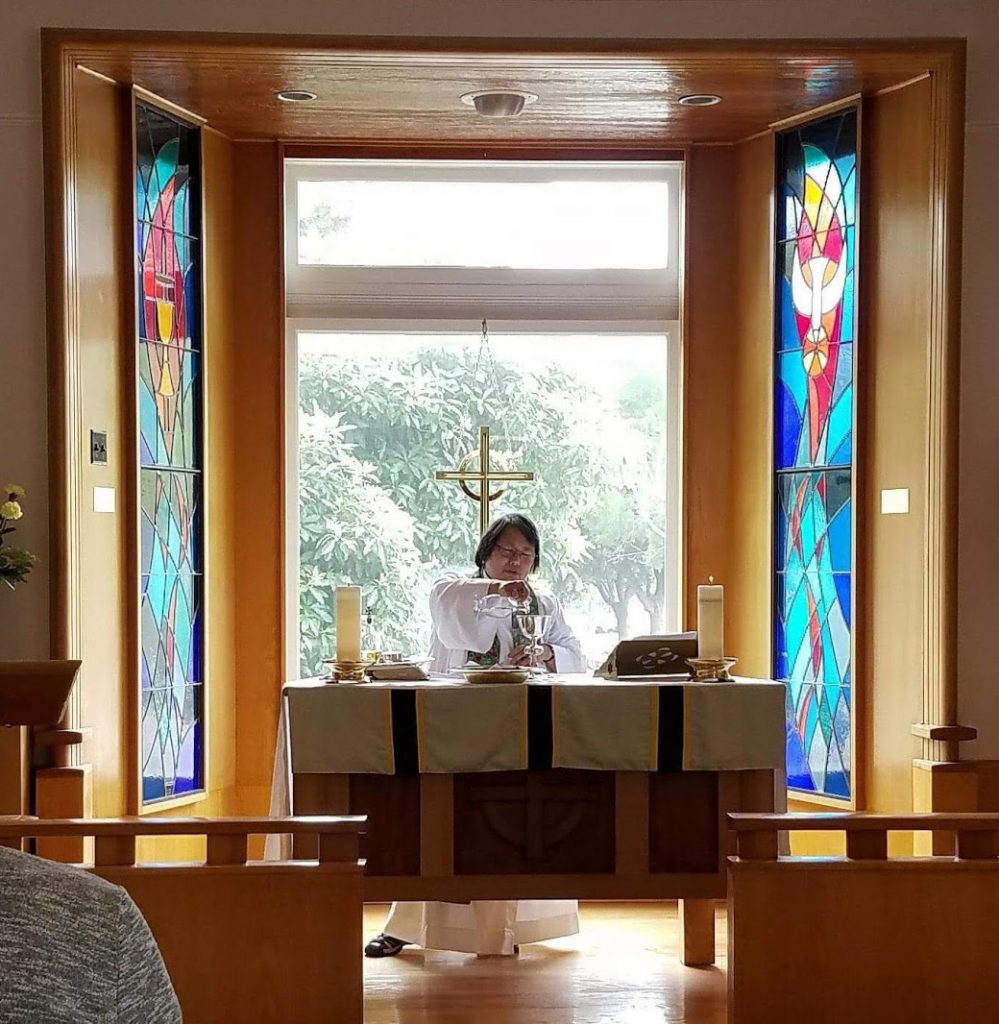By FRAN MORELAND JOHNS
“Our congregation reflects San Francisco,” says Senior Warden Gordon Park-Li of historic Christ Episcopal Church Sei Ko Kai, which graces the corner of Pierce and Clay Streets across from Alta Plaza Park’s grand staircase.
On any given Sunday, its small, warm sanctuary welcomes Japanese Americans, Chinese Americans and Americans of assorted other heritages. In a neighborhood where houses sell in the multiple millions, the stately Victorian home of Christ Church offers a unique link to the good and the bad of San Francisco’s past, as well as its constantly changing future.
Founded by Nippon Sei Ko Kai in 1895, it was the first Japanese Christian mission of the Anglican Communion in America. Originally located at 421 Powell Street, the mission soon moved to 709 Geary to share a three-story building with Fukuin-Kai, the Japanese Gospel Society, established in 1877. From there, the mission moved to several other locations before settling in at 1732 Buchanan Street from 1920 to 1942. Early on, Sei Ko Kai was recognized as an organized mission of the Episcopal Diocese of California, coming under the sponsorship of Trinity Episcopal and later Grace Cathedral.
After World War II and the internment of much of Japantown, the church moved to its current location in 1952. It shares space in its three-story Victorian with the Integral Counseling Center, which offers low-cost counseling, and with Alta Plaza Preschool. Both are part of the church’s intention to serve the community.
Rev. Debra Low-Skinner became vicar, or priest in charge, in 2016. In researching the building’s history, she found it was originally exactly what it looks like: a private residence. The property was willed to Grace Cathedral in 1935. Low-Skinner also found a copy of a 1950 document certifying the building was insured for $10,000, which might not cover replacement of the front steps today.
Internment decimated the Japanese American community and forced the church to close in 1942. Most of the congregation was interned at Topaz, Utah; some in other camps. Christ Church’s priest in charge, Rev. Joseph Kenjiro Tsukamoto, carried on the ministry in the camp along with Hisayoshi Terasawa, who later was also ordained.
When the war ended, many church members moved to other parts of the country. But a group of supporters convinced the Episcopalian bishop to reopen it. “The Rev. Tsukamoto and his wife Jane sought out not only English-speaking prospects, but also new arrivals from Japan and Hawaii, inviting them in, feeding and occasionally housing them in their own little vicarage,” a history of the church notes.
At the time of the internment, the congregation numbered approximately 150. Afterward, through the work of the Tsukamotos and others, it was gradually growing toward that number once again. But the little mission suffered another blow with the massive redevelopment of the Western Addition that uprooted countless Japanese American and African American families. In the years since, members have continued to move away, but a few others have joined. Now on most Sundays there is a group of 15 to 18 worshippers.
The spirit of Christ Church Sei Ko Kai remains undimmed. Its commitment continues as a voice for the Asian community in San Francisco and the Bay Area. Vicar Low-Skinner is president of the Japanese American Religious Federation and is active in organizations such as the San Francisco Interfaith Council and the Asian Commission of the Diocese of California.
“We’ve realized over the years the importance of the social aspect,” Park-Li says. Japanese green tea is offered after services, and special events on Mother’s Day and Easter are popular. Park-Li also has a few secret agents: his 4-year-old granddaughter and the grandchildren of several other parishioners, who delight in carrying “the gold plate” for the offering or extinguishing candles at the end of Sunday services. Services today are in English, though one of the readings is always in Japanese.
Reflecting the shifting times, Low-Skinner is Chinese American and grew up in San Francisco’s Chinatown. Her husband, who died of Parkinson’s disease two years ago, was a retired urban planner proud of his Danish heritage. Park-Li, retired chief executive officer of the San Francisco Superior Court, is also of Chinese heritage. He grew up south of Market in San Francisco; his Japanese American wife grew up in Tokyo.
“I don’t know what God has in mind for this church,” Low-Skinner says. “But I know we’ve been here for well over a century, and we’ll continue to serve God and the community as long as we’re here.”
Filed under: Body & Soul, Neighborhood History





